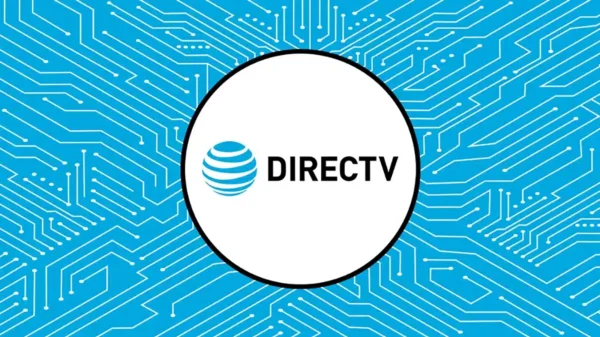Introduction
Apple iOS 18 is here, and it’s packed with exciting new features and enhancements that developers need to know. Whether you’re a seasoned developer or just starting out, this comprehensive guide will provide you with essential tips and insights to make the most of iOS 18. From setting up your development environment to publishing your app on the App Store, we’ve got you covered.
Understanding iOS 18
Overview of iOS 18
Apple iOS 18 brings a host of new features and improvements designed to enhance the user experience and provide developers with more tools to create amazing apps. It includes updates to the user interface, security enhancements, and performance upgrades that make it the most powerful iOS version yet.
Key Features
Some of the standout features of iOS 18 include an all-new multitasking interface, advanced privacy controls, and enhanced Siri capabilities. Developers can also take advantage of new APIs that open up possibilities for more immersive and interactive app experiences.
Compatibility and Requirements
To run iOS 18, devices need to meet certain hardware requirements. Generally, iOS 18 is compatible with iPhone models from iPhone 7 and later. Developers should ensure their development environment is updated with the latest version of Xcode to leverage all new features.
Setting Up Your Development Environment
Installing Xcode
Xcode is Apple’s integrated development environment (IDE) for macOS. To start developing for iOS 18, download and install the latest version of Xcode from the Mac App Store. Make sure your macOS version is compatible with the latest Xcode.
Configuring Simulators
Simulators are essential for testing apps without a physical device. Xcode’s simulator can mimic different iPhone and iPad models, allowing you to see how your app performs across various devices and screen sizes. Configure simulators to match the devices you plan to support.
Read more articles.
Utilizing the Swift Programming Language
Swift is the preferred language for iOS development. It is powerful, easy to learn, and offers modern syntax that can help you write cleaner and more efficient code. Ensure you’re familiar with Swift’s latest features and best practices to get the most out of iOS 18.
New Features and Enhancements in iOS 18
UI/UX Improvements
iOS 18 introduces several user interface enhancements that make navigation and multitasking smoother and more intuitive. The new split-screen feature allows users to run multiple apps simultaneously, which developers can leverage to create more dynamic and engaging experiences.
Enhanced Security Features
Security is a top priority for Apple, and iOS 18 includes new measures to protect user data. Enhanced privacy controls give users more transparency and control over their data, and developers must adhere to these guidelines to maintain user trust.
Performance Upgrades
iOS 18 is optimized for better performance, with faster app launch times and smoother animations. Developers can take advantage of these upgrades to create more responsive and engaging apps that provide a seamless user experience.
Developing Apps for iOS 18
Getting Started with SwiftUI
SwiftUI is Apple’s framework for building user interfaces across all Apple platforms. It offers a declarative syntax that makes UI development more straightforward and efficient. Learn how to create responsive and adaptive UIs using SwiftUI’s powerful tools.
Using UIKit for Legacy Apps
While SwiftUI is the future, many existing apps still rely on UIKit. Understanding how to integrate new iOS 18 features into UIKit-based apps is crucial for maintaining compatibility and enhancing user experience without a complete rewrite.
Integrating Apple APIs
Apple provides a wide range of APIs that allow developers to integrate advanced functionalities into their apps. From HealthKit to ARKit, these APIs enable you to create more innovative and useful applications that can take full advantage of iOS 18’s capabilities.
User Interface Design Tips
Designing for Different Screen Sizes
iOS devices come in various sizes and resolutions. Ensure your app provides a consistent and enjoyable experience across all devices by using adaptive layouts and testing on multiple screen sizes.
Accessibility Considerations
Accessibility is crucial for making your app usable by everyone, including people with disabilities. Implement features like VoiceOver, dynamic type, and color contrast adjustments to enhance accessibility.
Implementing Dark Mode
Dark Mode is a popular feature that can reduce eye strain and save battery life. Ensure your app supports Dark Mode by using dynamic colors and images that adapt to the system theme.
Performance Optimization Techniques
Memory Management
Efficient memory management is essential for smooth app performance. Use tools like Instruments to identify and fix memory leaks, and optimize your code to use memory more efficiently.
Code Optimization
Optimizing your code can significantly improve your app’s performance. Focus on writing clean, efficient code and using algorithms that enhance speed and responsiveness.
Efficient Networking Practices
Efficient networking is crucial for apps that rely on data from the internet. Use background tasks and optimize data fetching to ensure your app performs well under various network conditions.
Testing and Debugging
Using Xcode’s Debugging Tools
Xcode offers powerful debugging tools that help you identify and fix issues in your code. Learn how to use breakpoints, the console, and other debugging features to troubleshoot effectively.
Automated Testing with XCTest
Automated testing can save time and improve code quality. XCTest is Apple’s framework for writing and running tests in Xcode. Learn how to set up and run unit tests, UI tests, and performance tests.
Beta Testing and Feedback
Before releasing your app, conduct beta testing to gather feedback from real users. Use TestFlight to distribute your app to beta testers and collect valuable insights to improve your app before the final release.
Publishing Your App
App Store Guidelines
Adhering to App Store guidelines is essential for getting your app approved. Familiarize yourself with the latest guidelines and ensure your app complies with all requirements.
Preparing Your App for Submission
Prepare your app for submission by thoroughly testing it, creating a compelling App Store listing, and ensuring all metadata is accurate. Use App Store Connect to manage your app’s submission process.
Navigating the Review Process
The App Store review process can be rigorous. Be patient and responsive to any feedback from Apple’s review team. Address any issues promptly to ensure a smooth approval process.
Monetization Strategies
In-App Purchases
In-app purchases (IAPs) are a popular way to monetize apps. Learn how to implement IAPs effectively to offer users additional content or features.
Subscription Models
Subscription models can provide a steady revenue stream. Consider offering subscription plans that deliver ongoing value to users, such as premium content or services.
Ad Integration
Integrating ads can generate revenue while keeping your app free for users. Use Apple’s AdMob or other ad networks to display relevant ads that do not disrupt the user experience.
Post-Launch Maintenance
Updating Your App
Regular updates are crucial for keeping your app relevant and functional. Address bugs, add new features, and optimize performance based on user feedback.
User Feedback and Iteration
Listening to user feedback can help you improve your app. Use reviews and direct feedback to understand user needs and make iterative improvements.
Handling Crashes and Bugs
Crashes and bugs can frustrate users and lead to negative reviews. Use crash reporting tools to identify and fix issues promptly, ensuring a smooth and stable app experience.
Security Best Practices
Data Encryption
Protect user data by implementing robust encryption methods. Use HTTPS for all network communications and encrypt sensitive data stored on the device.
Secure Authentication
Implement secure authentication methods, such as biometric authentication and multi-factor authentication, to protect user accounts and data.
Protecting User Privacy
Respect user privacy by collecting only necessary data and being transparent about how it is used. Comply with data protection regulations and provide users with control over their data.
Utilizing Apple’s Ecosystem
Integrating with Apple Watch
Develop apps that complement your iOS app on the Apple Watch. Use WatchKit to create watchOS apps that provide quick access to important features and information.
Developing for Apple TV
Expand your app’s reach by developing for Apple TV. Use tvOS to create apps that deliver rich media experiences on the big screen.
Leveraging iCloud Services
iCloud integration can enhance your app by providing seamless data synchronization across devices. Use CloudKit to store and manage user data in the cloud securely.
Future Trends in iOS Development
AI and Machine Learning Integration
AI and machine learning are becoming increasingly important in app development. Use Core ML to integrate machine learning models into your app for tasks like image recognition and natural language processing.
Augmented Reality (AR) Opportunities
AR is a growing field with many applications. Use ARKit to create immersive AR experiences that enhance user engagement and provide unique functionalities.
The Impact of 5G on App Development
5G technology promises faster and more reliable internet connections. Understand how 5G can enhance your app’s performance and enable new features like real-time streaming and low-latency interactions.

Frequently Asked Questions (FAQs)
What are the new features in iOS 18?
iOS 18 includes a new multitasking interface, advanced privacy controls, enhanced Siri capabilities, and performance upgrades that make apps run smoother and faster.
How do I get started with SwiftUI?
To get started with SwiftUI, install the latest version of Xcode, and create a new project using the SwiftUI template. Follow Apple’s documentation and tutorials to learn the basics and advanced features of SwiftUI.
What are the best practices for app performance optimization?
Best practices include efficient memory management, code optimization, and implementing efficient networking practices. Use tools like Instruments and conduct thorough testing to ensure your app runs smoothly.
How can I monetize my iOS app?
Monetization strategies include in-app purchases, subscription models, and ad integration. Choose the strategy that best fits your app and provides value to your users.
What are the security best practices for iOS apps?
Security best practices include data encryption, secure authentication methods, and protecting user privacy. Adhere to Apple’s guidelines and use robust security measures to safeguard user data.
How can I leverage Apple’s ecosystem for my apps?
Integrate your app with Apple Watch, develop for Apple TV, and leverage iCloud services to enhance functionality and provide a seamless user experience across Apple devices.
Conclusion
Developing for iOS 18 offers exciting opportunities to create innovative and high-performing apps. By understanding the new features, setting up your development environment, and following best practices, you can build apps that delight users and succeed in the competitive App Store. Stay updated with the latest trends and continuously improve your app based on user feedback to ensure long-term success.
References
- Apple iOS18 Review.







































































Pingback: Bluestack 5 vs 10: A Comprehensive Comparison